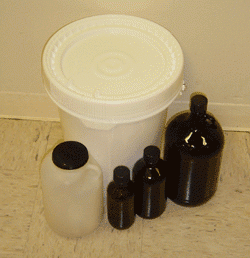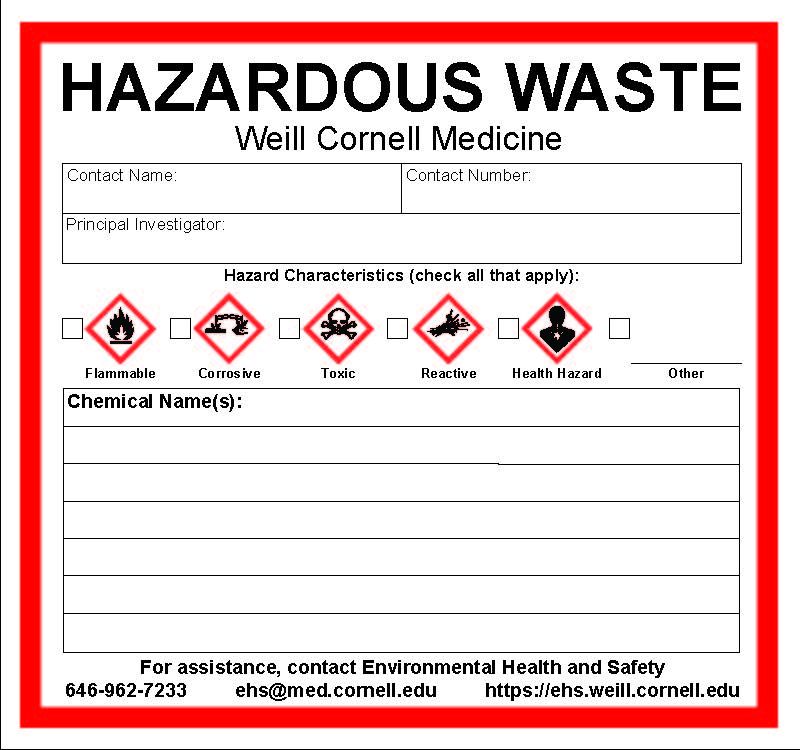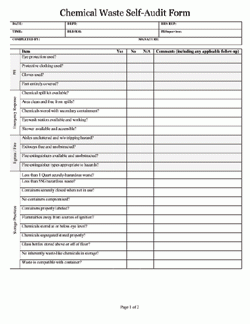Each point of generation (e.g. laboratory) at the College generating hazardous waste is considered a Satellite Accumulation Area (SAA). If certain requirements are not met, the SAA will then become a Central Accumulation Facility (CAF) and be required to follow all such regulations which apply to a CAF. The requirements of a CAF are time-consuming and impractical for individual laboratories or other areas at the point of generation. Therefore, it is essential to maintain SAA status. Use the following guide to ensure safety and compliance with all federal, state and local requirements:

Keep an area of the laboratory, or other points of waste generation,designated for chemical waste only and label as such.

Keep all chemical waste in an appropriate container (screw type lid) and closed at all times waste is not being added.

Mark containers with the appropriate Hazardous Waste labels. You may request labels from EHS free of charge, or download printer-friendly labels from our website.

Post a Health and Safety door sign in the entryway of the facility. If the laboratory does not have the door sign or it needs to be updated, please contact your Safety Advisor.

When using photoprocessing chemicals, follow the ![]() photographic processing waste management procedures, which require photographic waste to either be processed for silver recovery, or sent to EHS for disposal. The procedure also requires discarded negatives to be sent to EHS for recycling/disposal.
photographic processing waste management procedures, which require photographic waste to either be processed for silver recovery, or sent to EHS for disposal. The procedure also requires discarded negatives to be sent to EHS for recycling/disposal.
Complete a chemical collection request form to request collection of chemical waste. There is no charge for this service.

Clean up any chemical spills immediately. Contact EHS for assistance if necessary.

Keep a copy of the Waste Disposal Procedures Guide in a location that all personnel are aware of. Contact EHS to request copies.

Determine what chemicals may be placed in the sewer or trash according to the ![]() WCM Drain and Trash Disposal Procedures.
WCM Drain and Trash Disposal Procedures.
Make sure all laboratory personnel are trained for proper chemical waste management activities. This includes chemical hygiene plan training, attendance on an annual basis, and providing specific instructions based on waste generated in each point of generation.

Complete a ![]() chemical waste audit of your laboratory, or other point of chemical waste generation, regularly to ensure compliance.
chemical waste audit of your laboratory, or other point of chemical waste generation, regularly to ensure compliance.

Utilize secondary containment in waste accumulation areas to hold potential spills from containers, and to segregate incompatible wastes (e.g. oxidizers from flammables).

Maintain a current inventory of all chemicals. Ensure that a Material Safety Data Sheet (MSDS) is available for each chemical. If chemicals are no longer needed, dispose of them.

When discarding electronics, follow the ![]() Surplus Electronics Recycling Procedure.
Surplus Electronics Recycling Procedure.


